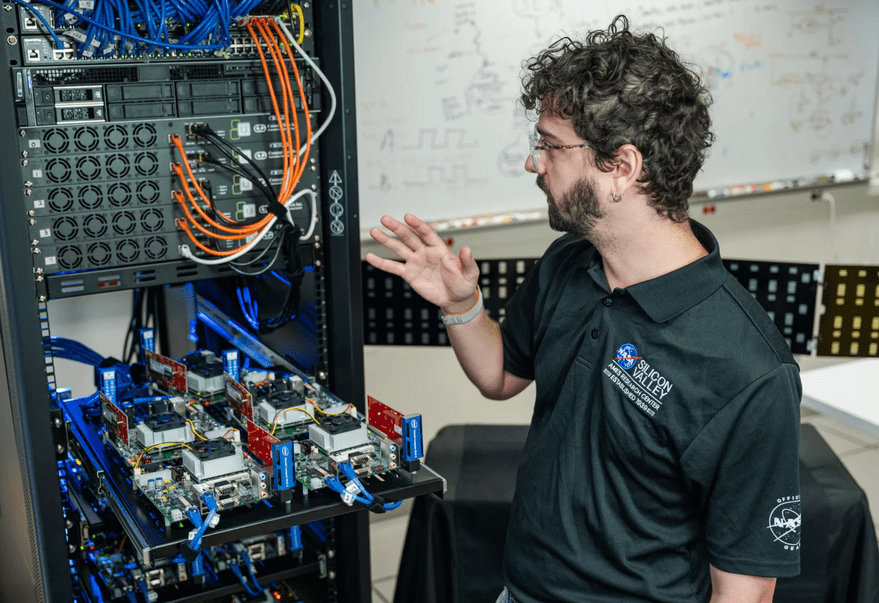SAN FRANCISCO – NASA is expanding testing of distributed autonomy for its first satellite swarm, Starling.The first phase of the Distributed Spacecraft Autonomy (DSA) program was conducted on four Starling cubesats from August 2023 to May 2024. DSA enabled Starling satellites to collect data on Earth’s ionosphere with onboard GPS receivers, prioritize key observations, share information and coordinate satellite positions without human direction.Additional instructions sent Feb. 6 will improve the mission’s scientific value.“We’ve been doing tech demonstrations, but we will bump the science fidelity to show that you can do increasingly difficult science computations and make decisions on those,” Caleb Adams, DSA program manager at the NASA Ames Research Center, told SpaceNews.Opportunistic ScienceNASA is eager to push the envelope of satellite autonomy to “enable a new type of scientific observations that weren’t possible before,” Adams said. “It enables opportunistic science and opportunistic observations,” Adams said.During exploration of Jupiter’s moons, for example, a satellite that detects a plume of gas rising from the surface could cue other satellites to make detailed observations. “When we think about observing phenomenon in the outer solar system and especially in something like the icy worlds, there are scientific phenomenon that happened so quickly you could not have a human joystick it like we joystick a rover,” Adams said.Closer to home, autonomous satellites could coordinate observation of natural disasters, alerting other satellites of events and coming to a consensus about action.Swarms also are resilient because failure of a single satellite does not harm the mission, Adams said.Common GoalsLast year, DSA demonstrated “the first fully autonomous distributed space mission,” Adams said. “We were able to set a high-level goal for our swarm and let that swarm sense and react to the environment.”While many constellations operate with minimal input from ground controllers, Starling satellites “are constantly deciding what to do, coming up with plans of action and performing those actions without waiting for us,” Adams said.When one satellite senses something that prompts a change of plans, it updates other satellites in the swarm. Program managers originally thought it might take a few minutes for all the satellites to reach consensus after plans changes. Instead, it took between two and six seconds.
By Tyler Mitchell
Tyler is a renowned journalist with years of experience covering a wide range of topics including politics, entertainment, and technology. His insightful analysis and compelling storytelling have made him a trusted source for breaking news and expert commentary.
